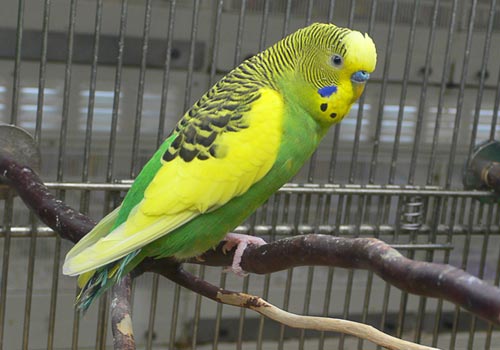
Aquarium fish can have great sensitivity to temperature changes and good temperature control is essential to keep your fish healthy and comfortable. But how can you always keep your tank at the ideal temperature?
Why Temperature Matters
It's easy for us to adjust to changing temperatures – when it is too hot, we may turn on a fan or air conditioner, choose lightweight clothing, take a cool drink or stay in a shady area. When it is too cold, we can turn on the furnace, bundle up in cozy layers, bask in the sun or snuggle under a blanket. Fish, however, cannot do any of these things, and the temperature in their tank – the only environment they have – is critical for their well-being. While most aquarium fish can tolerate some minor fluctuations, when the temperature changes too much or too quickly, different problems can occur, such as…
- Algae growth or plant decay that can change the tank's chemical balance
- Greater bacteria growth that may lead to fish illness or fatalities
- Changes in the water oxygenation levels
- Impacting fishes' metabolism, which impacts feeding needs
- Changing the breeding readiness of different fish
With so many tank characteristics relying on the appropriate water temperature, it is critical to keep that temperature stable at an acceptable level.
Controlling the Temperature in Your Tank
Before investigating different ways to control an aquarium's temperature, it is important to know what the ideal temperature ought to be. Most tank fish do well at temperatures from 75-80 degrees Fahrenheit (23-27 degrees Celsius), but the needs of specific fish can vary. If your tank is home to just one or two types of fish, it is best to investigate their preferred temperature range and take steps to keep your tank in the middle of that range. To help control the tank's temperature…
- Use a Thermometer for Easy Monitoring
A stick-on thermometer that attaches to the side of the tank is an easy way to keep apprised of the temperature, and you should check the temperature every time you look at the tank to be sure there are no unusual changes. Immersible thermometers are also available but can be more expensive. Whichever type you choose, be sure the thermometer is positioned so it can be easily read without distortion.
- Invest in a Quality Heater
A good heater will have a built-in thermostat that can automatically trigger the heater when the tank temperature changes. Some thermostats are set to just a single temperature – which should be in the middle of your tank's ideal range – or they can be programmed for a specific range. Position the heater in the middle of your tank for the best results and to keep the tank's temperature as stable as possible, and be sure your heater is the right type for your tank's size.
- Keep the Water Level Constant
Water will naturally evaporate from your aquarium, even if it has a lid. As the water level drops, the temperature can fluctuate more easily. If you need to add a large amount of water to the tank at once, you can also dramatically change its temperature. Instead, add properly balanced, conditioned water to the tank regularly as it is needed, without letting the level drop too much.
- Consider a Chiller
If your home can get hot, it may be best to add a chiller to your aquarium – it's air conditioning for your fish and, like a heater, will be controlled by a thermostat to keep the water temperature constant or within a programmed, acceptable range. Choose the best quality chiller your budget can afford, and be sure you are choosing one suitable for your tank's size.
- Position the Tank Thoughtfully
Many beginning fish-keepers don't realize just how much a tank's temperature can vary based on where it is placed. A tank by a heating vent or sunny window can warm up dramatically in a short period of time, and likewise a tank in a drafty area, near a fan or in another chilly spot can cool off too quickly for your fishes' liking. If your tank is subject to these fluctuations, a thermostat can be easily overwhelmed and the equipment may not be able to keep up with the changes.
- Note Product Warranties
Check the warranties on any aquarium temperature products you choose. A product failure through poor manufacturing or defects can mean the death of all your fish and the destruction of the careful aquatic environment you've created. Be sure you understand whether you can claim any replacement value for fish you may lose if the products do not perform properly.
It may seem like a challenge to keep your fish tank at the right temperature, but by taking appropriate steps and using the right equipment, it's easier than many novices realize to keep the water at a constant, healthy, comfortable temperature for your fish.







Comments